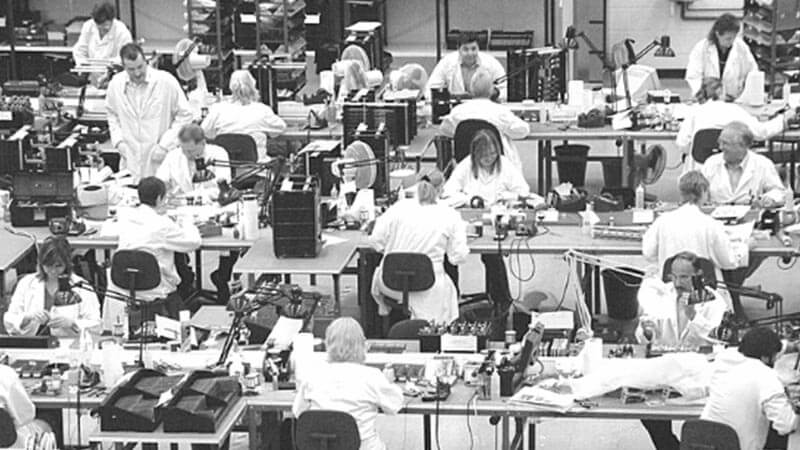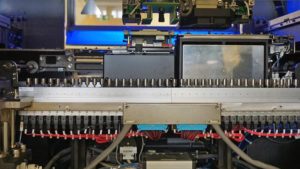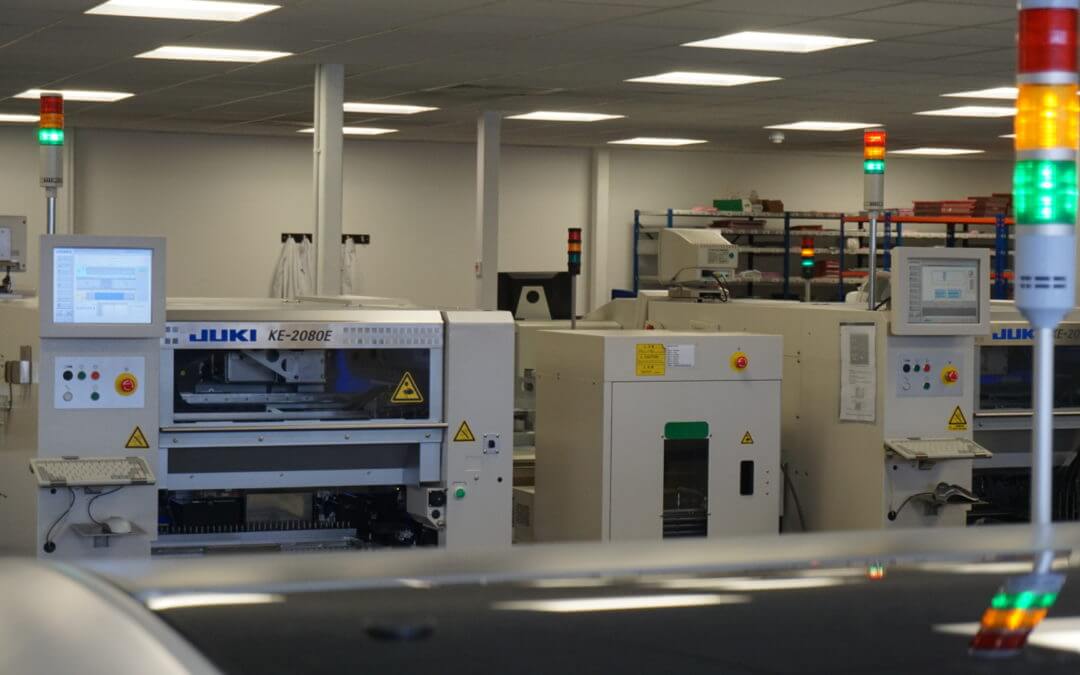OEMs servicing the healthcare and medical sector are feeling the squeeze as new technologies introduce as many new challenges as they provide opportunities and solutions.
Let’s take a look at the role of automation – and how it is answering old problems as it creates a fresh set of challenges – to those researching, developing and producing medical devices and products.
Automation, manufacturing and the medical sector
In a recent McKinsey Report manufacturing was found to be one of the sectors where automation can most easily be introduced.
478 billion of the 749 billion working hours (64%) spent on manufacturing-related activities globally are automatable with currently demonstrated technology.
Source
Specifically, in relation to medical device manufacture it was found that 60% of the hours spent on activities performed by production workers are automatable.
There are compelling reasons for OEMs to capitalise on the accuracy, efficiency, connected communication and agility that automation can bring.
OEMs of medical devices are experiencing increasing challenges in terms of price and margin pressure, speed to market expectations, increased product (and manufacturing) complexity and more stringent regulatory compliance.
- There is intense pressure to produce and distribute medical products within ever-decreasing timeframes.
- Simultaneously, the products are increasingly complex and regulatory requirements are more stringent and labyrinthine than in the past.
- The trend toward personalisation and miniaturisation of medical products simply compounds these challenges further.
In many ways, it’s the case of a perfect storm hitting the sector – tighter regulation, more product variants, complex designs and sophisticated manufacturing processes are all coinciding with an expectation that development and distribution will be faster than ever before.
But, in other ways, it is a perfect opportunity for those who are positioned correctly to take advantage.
So, how has automation helped cause this situation? And how can medical OEMs position themselves to benefit from it?
The automated future of healthcare
It’s not just in the manufacturing process itself that automation is affecting healthcare. It’s also affecting the products developed and the services delivered.
Five years ago the medical device connectivity market was largely insignificant but it is now expected to grow 38% over the next five years.
Source
The biochip market is estimated to be worth around USD17 billion by 2020.
Source
- A new area of bioelectronic medicine is emerging, thanks to the miniaturisation of electronics – tiny devices implanted in the body may help treat arthritis, diabetes and asthma by influencing electric signals in nerve pathways.
Other areas of innovation include robotic-assisted surgery, next generation smart inhalers that can track use and the ability to produce personalised products in small batches for specific patient requirements.

Automation and the healthcare supply chain
Automation and machine learning are set to radically improve the supply chain for the healthcare sector.
‘When we have visibility of product from manufacture to finished goods to the use on the patient, and we actually capture consumption activity rather than purchasing activity, we significantly reduce waste and variation in the supply chain.’
Steve Kiewiet, Vice President of Supply Chain Operations, BJC HealthCare
Automated tools can help organisations increase price transparency and streamline healthcare professional’s orders. Meanwhile, Radio Frequency Identification (RFID) technology can capture volumes of data from a product’s barcode.
More effective healthcare supply chain management could help check the $5 billion that the American healthcare sector loses annually to pilferage and waste.
Source
And data from devices collected during use can be continuously looped back to the manufacturer – for automatic ordering, performance feedback and even AI-initiated product improvements.
Automation: OEMs, EMS and the medical manufacturing processes
For OEMs, this data-connected supply chain will inevitably cause a shift from using many EMS suppliers to partnering with a select few. Inevitably, it will be those who are already intelligently automating and using smart technology to track and control production that will benefit.
Let’s look at the benefits that automation in the EMS sector can bring to OEMs.
From applying conformal coatings to protect circuitry and components in hazardous environments, to exclusive JUKI-automated kitting processes in our surface mount lines, we use smart, data driven techniques to not only increase the speed of production but also to eliminate errors and inconsistencies.
Stewart Gadd, Technical Director, Chemigraphic
Eliminating error and delivering flawless performance
The Internet of Things (IoT) is located at the point where physical objects with embedded electronics, software, sensors and network connectivity can automatically collect and exchange data with each other. For electrical manufacturing, this means smart machines that can accurately capture real-time data as they communicate with each other and the products they process.
This not only increases productivity, but it also identifies any inefficiency, increases quality consistency and avoids errors.
Many electronic components used in surface mount technologies are – to the naked eye – identical. But fitting the wrong part in the wrong place could be catastrophic for the product, and for the OEM’s reputation.
Control processes can be automated to avoid this. In relation to PCB, for example, each printed circuit board is given an individual barcode that enables manufacturing machines to access its production data. Enterprise Resource Planning (ERP) systems will only allow the movement of components and materials between each stage of the manufacturing process once the necessary criteria are fulfilled.
The ERP allocates a unique serial number per product which is automatically placed on it to avoid any possibility of duplication, lack of serialisation or inconsistency. All surface mount stock is managed by a fully automated kitting and storage system that avoids the risk and cost of human error.
In addition, RFID-enabled processing equipment tracks the movement of materials through the factory. Every operator, and operation performed, is tracked and measured against estimated figures and then monitored on site-wide dashboards. This means that we have the fully archived traceability of process necessary for regulatory compliance, and also live management data which is critical to driving truly effective improvement.
‘Our business relies on the strength and insight provided by the data network that runs throughout it. Automation is key to us – but, for us automation is about more than highly technical machinery. Automation is about using the tools and information we have around us to implement the best and most consistent methods of delivering the best results for us and our customers.’
Stewart Gadd, Technical Director, Chemigraphic

Regulatory approval for new products
The rate at which OEMs can get a new product to market is determined often by the time taken to gain regulatory approval. Such approval requires the collection of vast amounts of data through every stage of the product lifecycle.
The IoT provides a pathway for the efficient production of increasingly complex products, while capturing and analysing data flows to assist with regulatory compliance and process improvement.
Miniaturisation and personalisation
Advanced sensor technologies are increasingly enabling robots to take on tasks, like cutting gemstones, that had previously been reserved for highly-skilled craftspeople. The same technologies may even permit activities such as ‘painting’ electronic circuits on the surface of structures.
The role of automation is switching from high-speed and high-volume production applications to agile systems that can adjust on the fly, switching seamlessly between product types without the need to stop the line. Many emerging production technologies, from computerized-numerical-control (CNC) cutting to 3-D printing, bypass the need for tool changes, making it possible to produce batches of one.
Medical device manufacturers must remain competitive by responding quickly to changes in patient treatments. Customisation – and increasingly personalisation – of patient-specific devices will require high quality, high mix production that is perfectly suited to machine learning and automation.
‘One of the main areas of benefit the decentralised, smart manufacturing model offers is the ability to efficiently individualise products with high quality results — something that will be critical to success in the patient-specific devices market.’
Francisco Almada Lobo, CEO, Critical Manufacturing
Technology is only as effective as the way it is used
Of course, in the medical sector, it is critical that this automated production is vertically integrated so that corporate processes cannot be avoided: quality processes may demand that a device requires additional verification steps before the production process can continue.
The implementation of automation will, as a result, always be tempered throughout the medical device production process by compliance requirements and the need for quality control.
And, this is just one way that automation will only ever be as effective as the skill, knowledge and experience of those who use it. This is something that our team at Chemigraphic has always firmly believed.
The most successful EMS operations are those which combine the mass delivery and rigidity of automation with the intelligence and flexibility of those programming the machines.
Stewart Gadd, Technical Director, Chemigraphic
Read about how we recently supported the market introduction of Elekta Unity, a ground-breaking cancer treatment technology.










